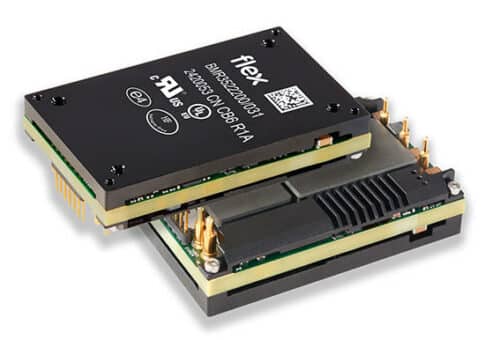A converter developed and designed for modern AI and machine learning systems sets new benchmarks in power management, data centre applications.

The ‘BMR352’ converter developed by Flex Power Modules, USA is a non-isolated and fully regulated quarter-brick DC/DC converter, offers up to 3kW peak power in a compact size of 58.4mm x 36.8mm x 14.5mm. Supporting an input voltage range of 40V–60V and a regulated output of 12.2V, it achieves a remarkable 97.9% peak efficiency. Its compact design allows seamless integration into tight spaces, making it ideal for space-constrained environments. Engineers and system designers working on power-hungry applications like high-performance graphics processing unit (GPU), AI servers, and machine learning platforms will find this module indispensable for their needs.
As part of the 9th generation digital quarter bricks, the converter represents significant advancements over earlier models, providing five times the power density of its predecessors. “With a continuous power output of 2kW and the ability to peak at 3kW, the module is engineered for power-intensive operations,” the developers noted.
A notable feature is its innovative baseplate design, which enhances thermal management without increasing height. Additionally, it supports through-hole mounting techniques like wave soldering and pin-in-paste production.
The BMR3512201/031, another variant in the product lineup, introduces active current sharing (ACS) for parallel operation, ensuring balanced load distribution across multiple converters. Unlike traditional droop load sharing methods, ACS minimises dynamic responses and enhances system stability, reducing the risk of downtime or component damage. Droop load sharing (DLS) variants will also be available.
Both BMR352 and BMR351 variants adhere to IEC/EN/UL 62368-1 safety standards, ensuring reliability in demanding applications. They also include dual-sided baseplates for improved thermal performance and customizable configurations, supporting potential firmware upgrades in the field.
Flex power designer software compatibility allows users to simulate, configure, and monitor performance through a power management bus interface, adding to the versatility of these modules. These advancements cater to the growing demands of data centres and GPU-driven systems, offering unmatched performance and reliability.








